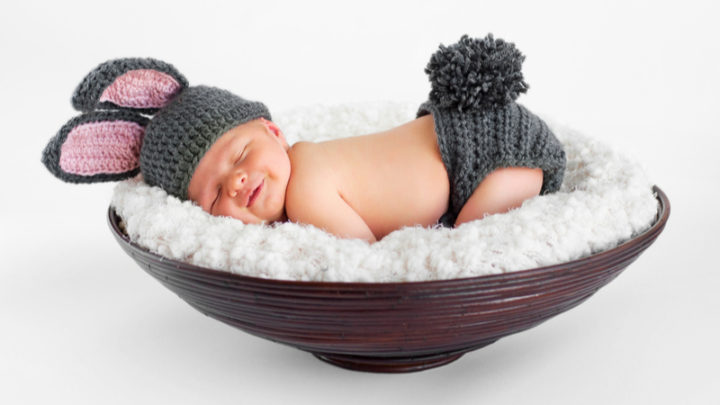You may have noticed your little one has adopted a new sleeping position, lying face down with their bum up in the air, but why do babies sleep with their butt in the air and is it dangerous?
The answer to the question Why do babies sleep with their butt in the air? is that the baby got used to sleeping in a fetal position in his mother’s womb. It’s tied to muscle memory and is bound to go away with time.
Is it dangerous though? No. By the time this starts happening he is changing positions autonomously after being placed to sleep on his back, which means he’s able to turn on his own.
This reduces the risk of SIDS significantly.
It’s cute if anything, as it’s a rather silly child’s pose and might even catch you by surprise when you enter the room and witness this sculpture-worthy position for the first time.
But what other reasons are there for your baby to keep his butt up, and should you be worried at any point?
Read on to find out everything you need to know about this quirky habit.
5 Reasons On Why Do Babies Sleep With Their Butt In The Air
1. It reminds him of the mother’s womb
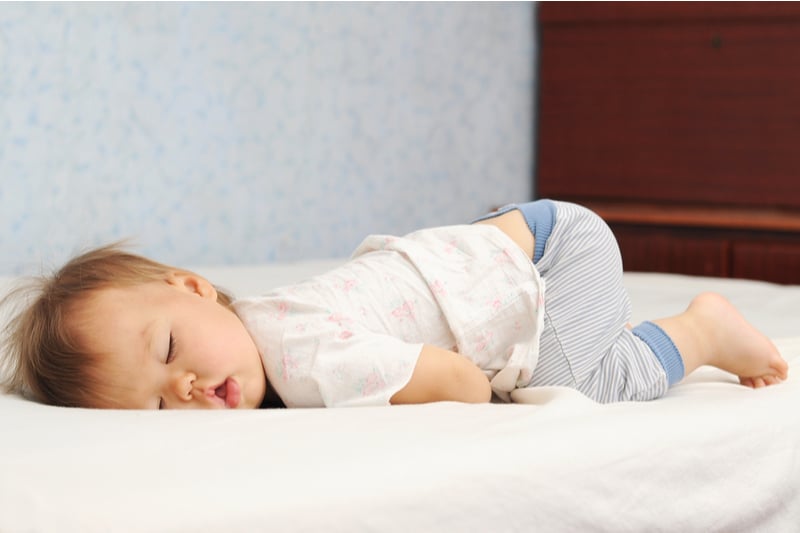
As I said at the start of this article, the main reason you see this odd phenomenon associated with baby sleep is rather simple.
When your kiddo finally develops his motor skill to a level that allows him to adjust himself, he’ll usually go for the safest option.
In this case, this is the option he is most used to, the one he was in for around nine months.
For a newborn baby, this becomes the norm at the time and is usually why he gets a bit cranky when he isn’t in this position when he’s awake, i.e being held or placed in a swaddle.
This frog position isn’t anything new, so you don’t have to panic. It’s simply the one that your little one is most accustomed to.
It’s a form of muscle memory for him that he’ll eventually grow out of and replace with a new position, one that might turn out to be equally as funny!
It’s something that continues well into adulthood and throughout the rest of our lives, we just don’t tend to notice it as much as it’s a lot more subtle and we don’t have eyes on us as often as we did when we were kids.
We all have our comfortable poses that we feel most secure in, whether it’s when walking, lazing around, or sleeping.
2. The superior comfort
It sounds silly, I know, but it’s simply what the baby is most used to.
That’s why babies love to take a snooze in this position once the developmental leap kicks in, which is when they’re finally able to turn around on their own in their crib.
It’s usually a sign that a lot of other changes are coming soon, so you better be ready for a whole bunch of shenanigans coming your way!
It might happen as early as when your baby is just a few months old, or as late as his 1st birthday, but the time will come soon enough, don’t worry.
3. Helps relieve stress

Another reason a sleeping baby really enjoys this position is because it helps relieve stress. It’s so hardcoded into our memories that the fetal position reminds us of safety, that it actually helps relieve stress and muscle tension from the body.
It might sound strange, but it’s actually one of the most common poses used in yoga for this very reason.
When we rest in this pose, a lot of the tension the body is normally put through is lost and spread out around the entire form, allowing us to relax.
The idea of babies being stressed out might sound like nonsense to some, but that crying doesn’t come from nowhere.
If you’ve ever had a fussy baby or a baby that’s experiencing colic, you know that he needs all the help he can get to relax. This is his secret weapon.
After all, all he wants after a strenuous day of crying is to lay down and fall asleep as fast as possible, something every adult can relate to.
4. A sign that your baby is growing
The most common answer to the question: Why do babies sleep with their butt in the air? is simple, they’re growing up.
When you see it for the first time, it’s a sign that their muscles and motor skills are evolving, and that, soon enough, you’re likely to see your little one start trying to crawl.
He’s bound to start becoming more active, though it’ll take a bit more time than that for him to adjust to this new level of freedom.
He’ll be stuck in this position for a bit longer. In fact, it’s the same position he’ll be using while crawling around until he develops a more ‘advanced’ method as he grows older.
It’s usually when the child turns a year old that he evolves different sleeping positions and walking methods, which might more closely resemble those that regular adults sleep and walk in.
In the meantime, enjoy taking some of the cutest photos you can with this silly pose!
To promote this growth when the crawling phase begins, make sure to do a little bit of tummy time with the baby to help further develop his motor skills, as well as help reduce gas buildup, which will also help your child have a more comfortable sleep.
Do note that you should stop using the swaddle now that your child has moved on to the next step as it’ll just feel too constraining for him.
Swap to a toddler sleep sack to give him more room to wiggle around and to reduce any risk of potential suffocation from the swaddle blanket.
5. It reminds them of being held
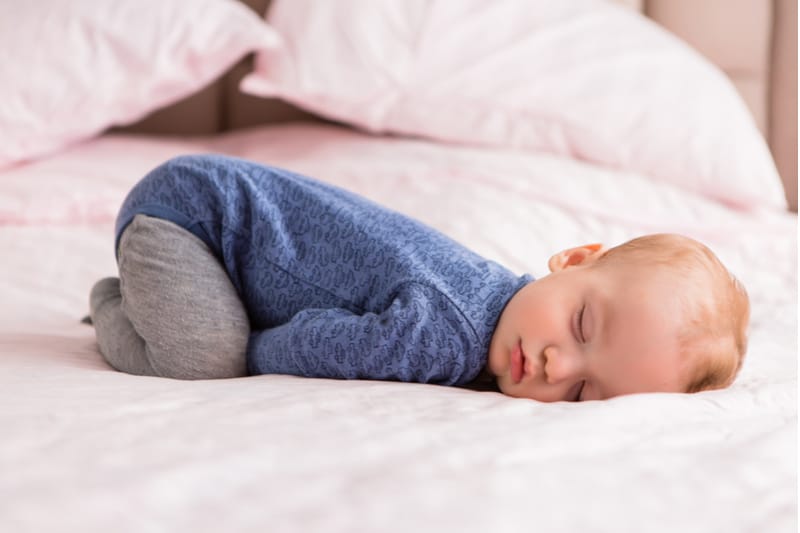
This frog position doesn’t just happen while the baby is in the womb, it also bears an uncanny resemblance to the way a baby is held in his mother’s arms, close to the chest, close to safety.
Kids like replicating this when they’re on their own and in their beds or while they’re being fed, as a similar position is used when they’re being given breast milk.
As a result of all of the positive emotions tied to this position, the brain defaults to it when a child is alone and needs to self-soothe.
This might also be the reason your child has started sleeping with his butt up now his muscles have developed.
Should You Be Concerned About This Behavior?
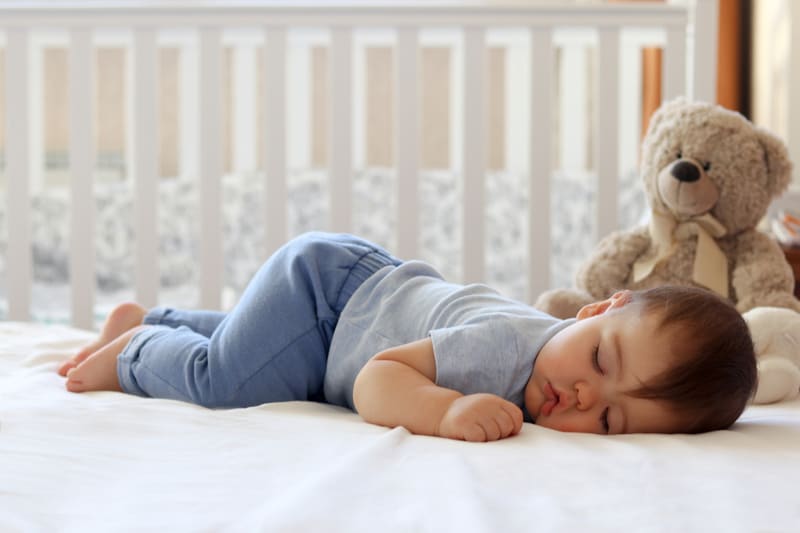
In the majority of cases, no.
As I mentioned before, once you see your child assuming these types of positions he’s most likely gotten to the point where he can adjust himself, so the risk of sudden infant death syndrome is greatly reduced.
Prior to this point, SIDS is a great risk for the child and something parents have to work to prevent.
While the cause of this medical condition is mostly tied to suffocation, there have been other times where the cause wasn’t conclusive.
What we do know is that SIDS is connected to a baby’s sleeping habits, specifically his inability to flip over if he ends up on his stomach without anyone around to help him get back onto his back.
While the baby should be relatively safe once he learns to crawl and roll and starts assuming different positions, it’s still best to ask for advice from a pediatrician on the matter just to be sure.
After all, no amount of online advice could ever replace the knowledge and expertise of a pediatrician or any other qualified healthcare professional who can identify underlying medical conditions.
The one credible source of online assistance you can trust is the website of the American Academy of Pediatrics.
Should Kids Be Put To Bed In This Position After They Learn How To Flip?
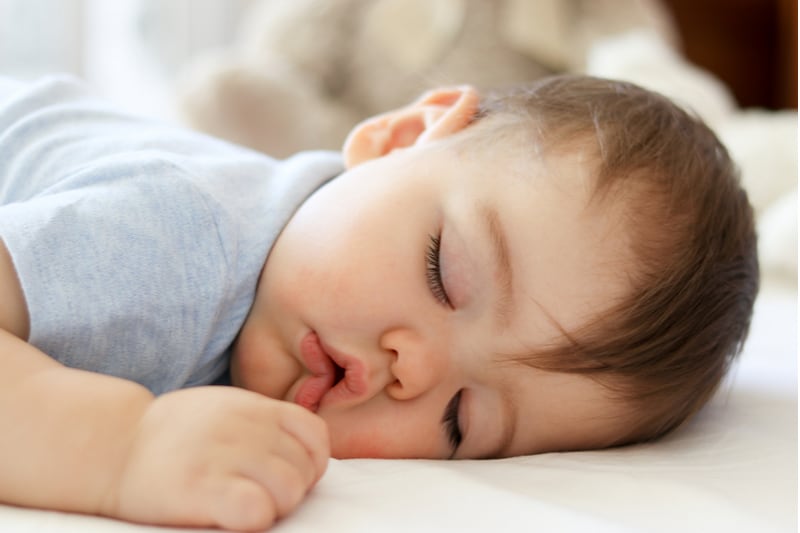
While you certainly could, I wouldn’t recommend it. Unless a problem arises while your child sleeps on his back, he should always be put to sleep laying in the default position.
If he’s capable of flipping over, he’ll adjust his position himself as he finds what’s most comfortable for him. After all, he may not have adjusted to his new level of freedom quite yet, so the first time you saw him with his butt up might have been a fluke.
Is It Dangerous For Babies To Sleep In This Way?
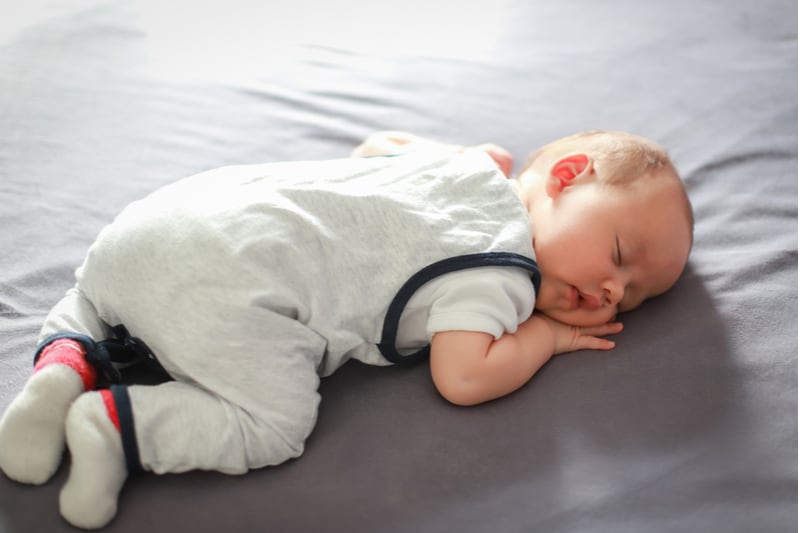
Once again, not really, at least not under normal circumstances. There are steps that you need to take to reduce the amount of risk this new habit might pose, though, but luckily they only need to be done once.
A key thing to pay attention to is the swaddle. Once your baby starts becoming more active and gains the ability to flip himself over, the swaddle becomes a bit too constraining for him and he’ll always try to wiggle out.
This creates the possibility of the blanket becoming a suffocation hazard.
Think of it as a cocoon that your child has finally grown out of, and so he is now looking to spread his wings.
The ‘wings’ in this case are a sleep sack, something that still keeps your kiddo snug as a bug, but with a lot more wiggle room to allow for all his crazy positional stunts during bedtime.
It also won’t create any extra clutter in the bed, keeping your child safe and comfy until his next baby leap hits.
In Conclusion
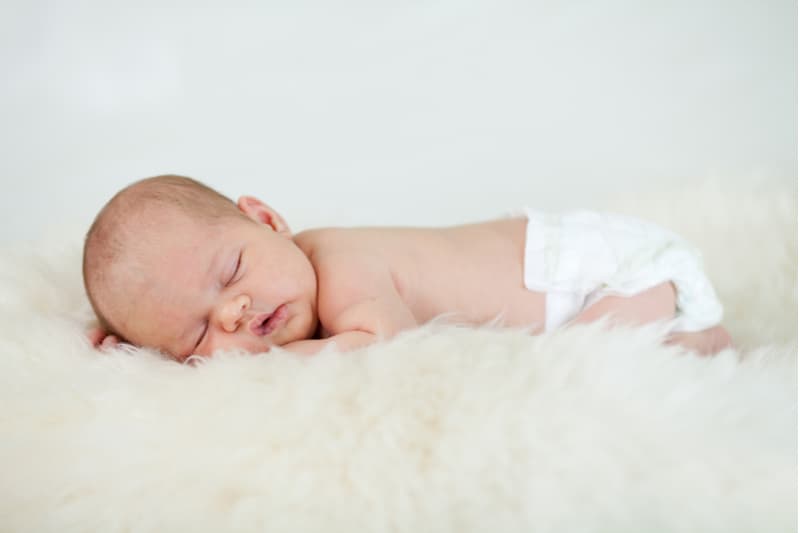
The answers to Why do babies sleep with their butt in the air? turned out to be rather simple in the end. It’s a natural instinct which is developed in the womb and simulated through the standard method of holding a child in your arms.
It’s muscle memory, a default state that almost all children cling to when they hit their first developmental leap.
It’s a sign that your baby is ready to start crawling, that he’s growing up, and, most importantly, that the risk of sudden infant death syndrome has been greatly reduced so you can start breathing easy when it comes to bedtime.
You’ll still have to replace the swaddle with a sleep sack or just get rid of it altogether.
The position itself is also a type of coping mechanism, allowing your baby to self-soothe in the night and get to sleep easier. Try it yourself if you have trouble sleeping, it might work just as well for you as it does for your baby.
Finally, just to make sure everything is okay, feel free to discuss this at your next appointment with your pediatrician once this change occurs, just so they can confirm that everything is okay and let you know how best to proceed.
I’m certain that you’ll make the right choices regardless, mamma, as I know you always put your children’s safety first.
Until next time!
Like this post? Please share or pin it for later. You can also stay in the loop and follow us on Facebook, Instagram or Pinterest.
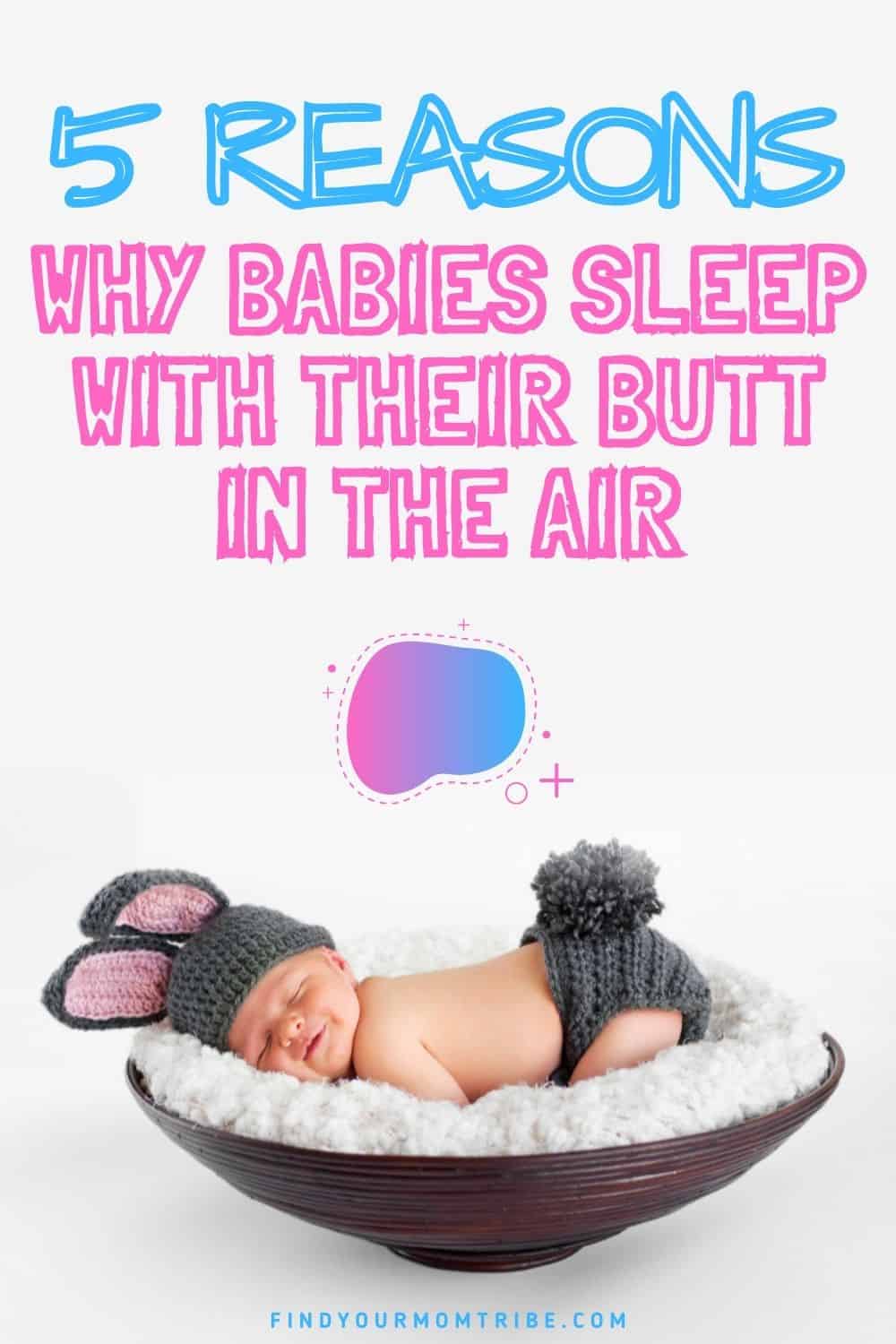
We love honesty! Find Your Mom Tribe is an Amazon Associate and we earn from qualifying purchases through affiliate links at no extra cost to you. Please see our full Amazon Affiliate disclosure for more information.

